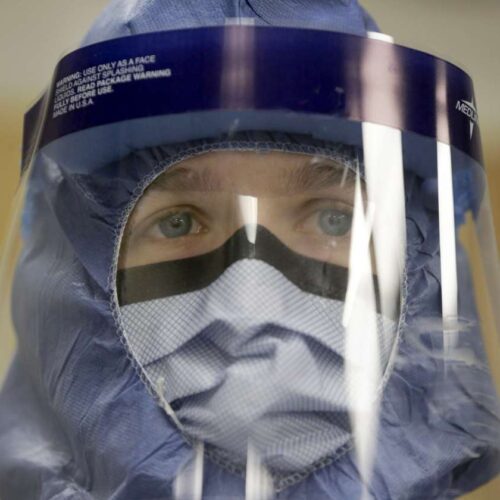Introduction
Despite the Obama administration’s repeated warnings about the menace of a widespread contagion within the United States, both lawmakers and independent experts have recently given low marks to government initiatives designed to detect, track, and protect against those threats.
In recent years, both the Ebola outbreak in West Africa and the spread of the Zika virus in Latin America have brought the nature of threat into sharp relief. In the 2015 Worldwide Threat Assessment, Director of National Intelligence James Clapper admitted that the world’s response to Ebola was too slow.
“Gaps in disease surveillance and reporting, limited health care resources, and other factors contributed to the outpacing of the international community’s response in West Africa,” Clapper wrote. In the most recent Worldwide Threat Assessment, released in February, Clapper issued an ominous warning in regard to the Zika virus, which he said “is projected to cause up to 4 million cases in 2016; it will probably spread to virtually every country in the hemisphere.”
Earlier this month, that assessment was amplified by researchers from the National Center for Atmospheric Research and the University Corporation for Atmospheric Research. In a study published in the Public Library of Science’s journal PLOS Currents: Outbreaks, they warned that at least 50 U.S. cities are at risk for a Zika Virus outbreak this summer.
As the effects of climate change spread worldwide, experts warn more that contagions are on their way. And yet, the two Department of Homeland Security (DHS) programs meant to protect Americans against these biological threats aren’t up to the task, according to the Government Accountability Office (GAO).
One of these programs, the National Biosurveillance Integration Center, or NBIC, was created in 2007 to be a hub of information and coordination for federal agencies tracking diseases and biological threats. But the mission is suffering, a September 2015 GAO report said, because many federal agencies, such as the Centers for Disease Control and Prevention (CDC), are not sharing information with NBIC. Among the reasons, CDC officials said: legal restrictions that compel them to redact data from reports, a labor-intensive process. The report said other federal agencies’ officials did not understand the purpose or value of giving resources to NBIC.
“[NBIC doesn’t] have the access to information and data, they don’t have the trust of partners,” said Chris Currie, director of the GAO’s Emergency Management and National Preparedness Team, in an interview. “What they do provide is good but it isn’t really that useful for the partners.”
DHS did not respond to a request for comment. But in its response to the GAO report, the agency noted that GAO had not surveyed state and local authorities. “DHS believes that NBIC’s products provide these stakeholders significant value,” the agency wrote, adding that NBIC is developing tools to facilitate better information gathering.
Nevertheless, Andrew C. Weber, former assistant defense secretary for nuclear, chemical and biological defense programs, is among those who find the status quo unacceptable.
“I think it’s outrageous that any agency wouldn’t feel obligated to share with other agencies just as a matter of course,” he said. “I’ve heard all of the excuses for not sharing and I think they don’t hold up in a world where early detection of biological events can save lives.” Weber continued: “Data collection, data sharing, data management were a major impediment during the entire Ebola crisis.”
NBIC’s reports during the Ebola crisis did provide biosurveillance information, but those working in government during the crisis recall that it was just another resource, rather than a substantive information clearinghouse. Some experts don’t remember NBIC’s role during the crisis at all.
In the aftermath of the crisis, the Obama administration’s former Ebola Czar Ronald Klain has suggested the creation of a Public Health Emergency Management Agency—a specialized group of people trained to deal with emerging disease outbreaks. Critics counter that another center is unnecessary; and that instead federal agencies need to work together.
NBIC isn’t the only DHS program facing criticism; officials are also skeptical of BioWatch, a system of about 600 air collectors in 30 cities nationwide that is meant to detect a mass biological event such as a terrorist attack.
The collectors resemble little ice boxes and are meant to “sniff” the air for an intruder such as Anthrax or smallpox. But the air samples are only retrieved once every 24 hours. A local public health official has to manually remove a filter from the ice box and take it to a lab to determine if it matches a known toxin. The entire process is estimated to take between 12 and 36 hours, which experts say is too slow.
Attempts to automate that process failed.
Between 2009 and 2014, DHS spent at least $61 million in an effort to create a more high-tech box that could both collect the sample and analyze it within 4 to 6 hours. That initiative, dubbed “Gen 3,” turned out to be science fiction. DHS cancelled the project in 2014 in the wake of a September 2012 GAO report that found it was billions of dollars over budget.
The GAO subsequently said in October2015 that it wasn’t clear the current BioWatch technology was working either, because DHS had never properly tested the existing air collectors.
“They didn’t really document all of the uncertainties with the system, which you kind of need to know,” Currie said.
DHS largely concurred with that GAO report, but took exception to GAO’s conclusion that DHS had not established proper performance requirements for the system during testing.
Despite the controversy over BioWatch’s effectiveness, the Obama administration is proposing to spend $81.9 million on the program in its fiscal year 2017 budget.
Other experts say the whole Biowatch concept is flawed. Dr. Laura Kahn at Princeton University’s Program on Science and Global Security, an expert on biodefense and pandemics, suggested that money would be better spent tracking animal life, arguing that animals can be monitored as natural biosensors. Other experts agree that collection methods need to evolve to include more animal specimens.
But former DOD official Weber believes that a variety of detection methods must be employed, and then coordinated across the government. At the moment, bio-surveillance programs are spread across numerous federal agencies.
“If there were to be a large aerosol release of say anthrax, the earliest detection would be environmental sensors,” he said. “That’s because animals wouldn’t get sick immediately.” Air sampling, Weber said, is vital to the strategy. “We can’t afford to lose a few days.”
“That’s why I really believe in integrated comprehensive surveillance that includes both environmental and clinical data,” Weber added. “It can’t be stove-piped; we can’t rely on just one aspect,” says Weber.
Congress has put forth a potential legislative fix. The CBRNE Defense Act of 2015 would create a new office within DHS, the Chemical, Biological, Radiological, Nuclear, and Explosives Office, which would place both NBIC and BioWatch under integrated new management.
President Obama’s 2017 budget accounts for this bureaucratic shift even though this legislation has not yet passed in the Senate: the House approved the idea on Dec. 10, 2015.
Members of Congress expressed frustration at the current state of affairs in a February 11 hearing of the House Homeland Security Committee’s subcommittee on Emergency Preparedness, Response & Communications.
“I’ve grown frustrated, like many, that we seem to be having the same hearings over and over again. At least once every Congress, we ask the department to come to the committee to respond to the latest criticisms of BioWatch and NBIC,” Congressman Bennie Thompson (D-Miss.) said in his opening statement.
And even coordinating NBIC and BioWatch within DHS may not be the answer. The GAO asserted in its testimony at the subcommittee hearing that the White House’s implementation plan and strategy for bio-surveillance falls short, because they do not establish where bio-surveillance fits into the larger biodefense strategy. A separate Blue Ribbon Study Panel concluded in 2015 that the government’s biodefenses needed to be better organized. The panel suggested that the effort be placed under the Office of the Vice President.
Lauren Chadwick is a Scoville fellow at CPI.
Read more in National Security
National Security
A former senior U.S. general again calls for abolishing the nuclear forces he once commanded
A new memoir by a former head of the Strategic Air Command recounts his battles inside the government to rein in a nuclear targeting plan he considered reckless
National Security
‘The army to set our nation free’
Former Sheriff Richard Mack has a plan to roll back gun control, tax laws and land-use constraints, one defiant local law enforcement official at a time


Join the conversation
Show Comments